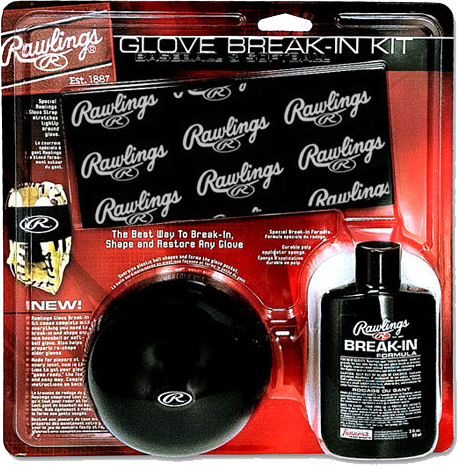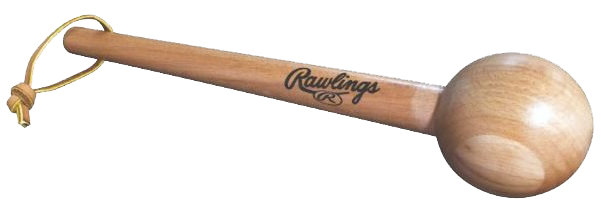Did you just buy a new baseball or softball glove and is it still very stiff? Then you know what time it is.. Time to break in your glove! By giving your glove the right treath it will make it more flexible and give it the pocket shape that you like. Keep on reading this guide to find out the ways to break-in your glove.
There are a couple of glove series like the All-Star Pro-Elite, All-Star System7, Rawlings Heart of the Hide and the Rawlings Pro Preferred that feel really stiff when you buy them. Other series that are a bit cheaper are easier to break in but you will have a break-in period in any glove. So with a little patience, basic maintenance and technique of breaking-in, your glove should last a lot of innings, lets hope years.
The best way to break in a new glove is by simply using it. Just by catching balls of a machine or playing catch with someone will lead to the most natural break-in. This proces will form the glove to your hand and to the way you use it. The harder your friend throws or the faster the machine is set, the faster the glove will break-in. You can also speed up the proces by yourself, but do this carefully as extra pounding and bending of the glove will take away form the overall life of your glove.
Pounding
There are some tools like the All-Star Mitt Masher or the Rawlings Glove Mallet. This tool allows you to focus on one spot while impacting the glove, these impacts can influence the shape of the pocket. So for example if an outfielder wants a deeper pocket, they can concentrate the impacts at the base of the web. For an infielder requiring a shallow pocket, you can put the focus on the center of the palm. If you don’t have a glove mallet at home, you can improvise and use the barrel of the bat.
The second option to break-in your glove is by throwing a ball in the glove by yourself. A very simple option that can be done at any time. You can speed up this process by using a weighted ball.
You can switch areas in the hand for when your index and middle finger start to hurt. This will free up the most common impact areas and will also improve the hand’s closing strength.
You can also impact the backside of the web to soften it up, this is not always necessary as the web is softer at the start.
Hinge points
Try to work on the hinge points of the glove. Do this by grabbing the thumb and pinky of your glove or mitt with the web facing away from you. Now manually open and close the glove repeatedly while using a light twisting motion. Use this twisting motion to soften the hinge point at the so called “heel” of the glove.
Inside out
A different way to start the break-in process is by flipping the glove inside out a couple of times to help soften the leather. This technique is often used by some pro players. You hold the glove by the thumb and pinky with the backside of the glove facing towards you. Now you use both of your thumbs to push this backside away from you. Put the focus on pushing from the center of the glove, roughly on the back of where the pocket would be. This method will stretch the leather and lacing and will create a start in the process. Use this method carefully! Overworking or overstretching the glove in this motion can cause damage to the lacing and stretch the holes in the glove that the lacing passes through.
Conditioning
All of the All-Star fielding gloves and mitts use oil treated leather. So by adding more oil or conditioner, you will not speed up the break-in process. But by using a condition once in a while, say once a year, you’ll benefit the break-in process. The conditioner helps the leather to stay strong and not dry out.
Keep in mind, when conditioning the glove, please do not use any conditioner that contains silicone ingredients as they can dry out the leather over time. Ingredients to look for are lanolin and beeswax.
And remember that applying water of steaming some gloves will void the warranty. Water and steam provide soft term softening, it can dry out the leather in the long term and will add weight to the glove.
Storage
There are a couple of rules when storing the glove:
After you have used the glove in the rain, always give it a chance to dry out in a warm and dry place.
Remove any excess dirt with a cloth, dry or damped to clean the glove.
When the glove is not in use, put a ball or multiple balls in the pocket at the preferred location where you catch the ball and tie it tightly with a shoe lace.
Keep the glove in a mild to warm temperature as this is preferred. Never leave it in places with a colder temperature, for example in a garage.



